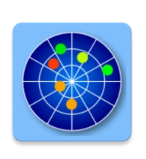Introduction to GNSS Status
GNSS Status is a specialized tool designed for users who rely on accurate location data, satellite visibility insights, and real-time navigation diagnostics. As modern devices increasingly depend on Global Navigation Satellite Systems for travel, mapping, surveying, and outdoor activities, GNSS Status provides the clarity needed to understand how your device interacts with the sky above. With its advanced monitoring features, GNSS Status allows users to view satellite positions, assess signal quality, measure accuracy, and diagnose potential performance issues in their location services.
The main purpose of GNSS Status is to offer transparency. Instead of simply relying on your device’s GPS results, GNSS Status reveals the technical details behind your position fix. This includes information about satellite numbers, signal strength, error margins, and atmospheric influences. By providing this information in a user-friendly interface, GNSS Status helps both casual users and professionals ensure their navigation and positioning remain reliable.
GNSS Status stands out because it focuses fully on satellite and signal diagnostics rather than navigation alone. Whether you use GNSS Status for hiking, driving, surveying, or troubleshooting location issues, the app empowers you with insights that enhance accuracy, reliability, and confidence.
What GNSS Status Does
GNSS Status is designed to give an at-a-glance overview of all available satellite systems your device can detect. These include:
- GPS (USA)
- GLONASS (Russia)
- Galileo (EU)
- BeiDou (China)
- QZSS (Japan)
- NAVIC (India)
Each satellite system contributes to your device’s ability to calculate an accurate position, and GNSS Status makes this information visible and easy to interpret.
Key positioning metrics displayed by GNSS Status:
- Number of satellites currently in view
- Number of satellites actively used in positioning
- Signal-to-noise ratio (SNR) readings
- Dilution of Precision (DOP) values
- Altitude and speed
- Horizontal accuracy indicators
- Real-time strength distribution
By showing how each satellite contributes to your fix, GNSS Status allows users to evaluate overall reliability. If you ever wonder why your location accuracy fluctuates, GNSS Status provides the answer.
Real-Time GNSS Monitoring
One of the strongest features of GNSS Status is its real-time monitoring capability. As your device collects satellite signals, the app dynamically updates the display to reflect current satellite visibility, geometry, and signal strength. This real-time behavior helps users understand changing conditions—such as obstructed skies, interference, or hardware limitations.
GNSS Status dynamically shows:
- Shifts in satellite position
- Drops in signal quality
- Improvements when moving to open areas
- Device-based fluctuations in GNSS reception
- Environmental factors affecting GNSS performance
For travelers, drivers, hikers, and surveyors, GNSS Status becomes a valuable troubleshooting tool. If your navigation app behaves unexpectedly, GNSS Status can reveal whether the issue stems from poor satellite alignment, low SNR, or device-level limitations.
Visual Satellite Constellation Display
GNSS Status includes a satellite sky map that visually represents satellite positions relative to your device. This graphical view is useful for understanding how many satellites you can access based on your surroundings.
The constellation view in GNSS Status typically includes:
- Satellite identifiers
- Orbital position diagrams
- Signal strength indicators
- Status color-coding (in view vs. in use)
This map helps you quickly understand if your device is blocked by buildings, trees, tunnels, or mountains. If the sky appears partially obstructed, GNSS Status will show minimal satellite coverage, explaining drops in accuracy.
GNSS Accuracy Diagnostics
Accurate positioning depends on many factors. GNSS Status helps users identify and diagnose these factors so they can adjust their environment or behavior accordingly. The app provides several accuracy indicators that demonstrate how reliable a location fix currently is.
GNSS Status accuracy tools include:
- HDOP, VDOP, PDOP (horizontal, vertical, positional dilution)
- Accuracy radius in meters
- Speed and altitude accuracy
- SNR bars for individual satellites
These metrics allow advanced users to understand the quality of the GNSS geometry. Even for beginners, GNSS Status makes it easier to determine whether a location reading is trustworthy or temporarily unreliable.
Ideal for Travel and Transportation
As categorized under travel and transportation, GNSS Status serves as a practical companion for people on the move. Whether you’re navigating a remote trail, calibrating a vehicle navigation system, or monitoring outdoor route performance, GNSS Status improves situational awareness by revealing how effectively your device communicates with global satellite systems.
Travelers often encounter varying GNSS conditions depending on terrain and infrastructure. GNSS Status helps identify:
- Mountain and canyon blockage
- Urban skyscraper interference
- Dense forest canopy issues
- Weather-influenced signal degradation
- Device-specific GNSS responsiveness
By understanding these influences, users can adapt their positioning strategies—for example, moving to an open area or waiting for better satellite alignment.
Helpful for Outdoor Enthusiasts and Surveying
Beyond travel, GNSS Status is extremely useful for outdoor activities such as:
- Hiking
- Camping
- Geocaching
- Trail mapping
- Field surveying
- Off-road navigation
People engaged in these activities often rely heavily on accurate positioning. GNSS Status helps them verify accuracy and avoid potential errors that may affect route planning or trip safety.
For field workers, land surveyors, and outdoor professionals, GNSS Status acts as a quick satellite verification tool before performing tasks that require precise coordinates.
Simple, Clean, and Accessible Interface
Despite offering advanced data, GNSS Status maintains a clean and intuitive interface. Information is presented in well-organized sections, allowing both beginners and seasoned GNSS users to benefit.
GNSS Status interface features:
- Clear, color-coded data
- Easy-to-read graphs and bars
- Organized real-time metrics
- A simple navigation layout
- Accessible explanations of GNSS performance
This simplicity makes GNSS Status suitable for a wide audience, from curious travelers to expert technicians.
A Lightweight Tool with Powerful Insights
GNSS Status is lightweight, efficient, and optimized for rapid performance. It does not require advanced hardware or expensive data subscriptions. Instead, it uses your device’s built-in GNSS chip to gather and analyze satellite information.
Because GNSS Status runs efficiently, users can keep the app open during long trips or outdoor activities without significant battery consumption. Its ability to deliver complex GNSS insights in real time makes it a valuable everyday tool.
Technical Information for GNSS Status
- App Name: GNSS Status
- Version: 0.9.18
- Package: at.harnisch.android.gnss
- Category: Travel and Transportation
- License: Free
- Operating System: Android
- Languages: English + 8 additional languages
- Author: Harnisch Gesellschaft m.b.H.
- Content Rating: 3+
These details ensure that GNSS Status is accessible to a wide audience and compatible with a broad range of Android devices.
Why GNSS Status Stands Out
GNSS Status is an essential tool for users who want deeper insight into how their device determines position. Unlike navigation apps that simply show maps or directions, GNSS Status reveals the underlying satellite data and measurement metrics. This transparency helps users:
- Improve navigation reliability
- Understand accuracy limitations
- Diagnose device or environmental issues
- Learn more about how GNSS technology works
- Maximize performance during travel or outdoor exploration
For anyone relying on their device for precise positioning, GNSS Status is an indispensable companion.
Conclusion
GNSS Status is more than just a satellite viewer—it is a comprehensive tool that empowers users with detailed GNSS insights, accuracy diagnostics, and satellite performance data. Whether you're navigating, exploring, or troubleshooting, GNSS Status reveals the full picture behind your device’s location services. With its real-time monitoring, clean interface, and advanced data presentation, GNSS Status stands out as a reliable and informative companion for travel, outdoor activities, and daily positioning needs.
If you want to improve your understanding of satellite systems, ensure reliable navigation, or simply explore the power of GNSS technology, GNSS Status is an excellent tool that brings clarity, accuracy, and confidence to every journey.









